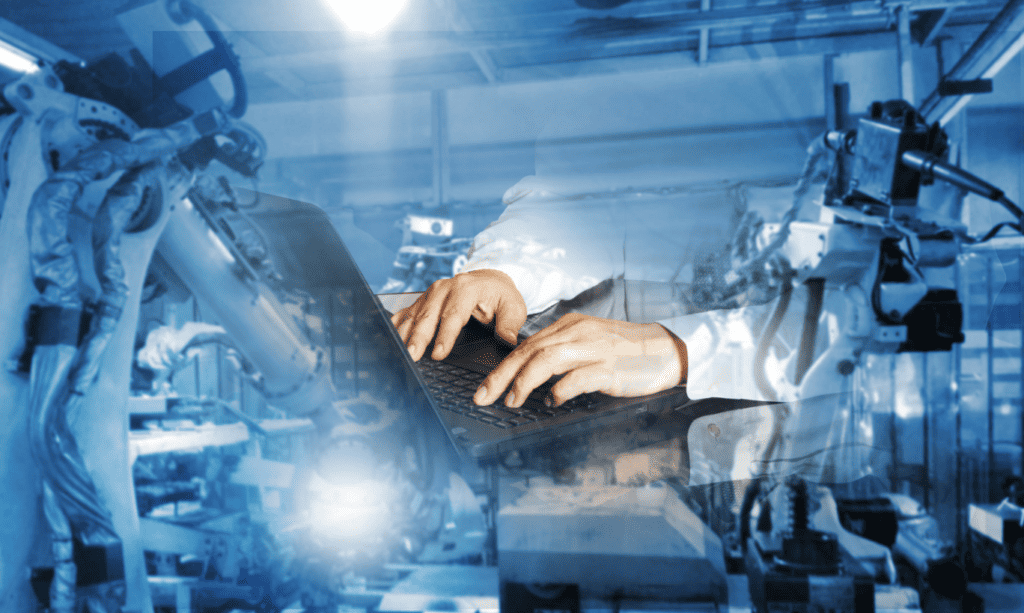Product engineering refers to the comprehensive process of designing and developing a product from concept to market release.
Table of Contents
It encompasses a wide range of activities, including ideation, design, development, testing, and deployment, aimed at creating products that meet the needs of consumers and stand out in the competitive market.

Importance of Product Engineering
The role of product engineering in bringing innovative products to market cannot be overstated. It not only ensures that new products are functional, safe, and reliable but also that they are designed with the end-user in mind.
Through a meticulous process, product engineering transforms ideas into tangible goods, driving technological advancement and contributing significantly to a company's success and market competitiveness.

Understanding Product Engineering
Product engineering is defined as the process of designing, developing, and bringing a product to market. Its scope covers a range of disciplines, including mechanical, electrical, and software engineering, all working together to create a cohesive and functional product.
This multidisciplinary approach ensures that all aspects of the product's performance, usability, and manufacturability are considered from the outset.
The Distinction Between Product Engineering and Other Types of Engineering
Unlike specialized fields of engineering that focus on specific aspects of development, such as electrical or software engineering, product engineering involves a holistic view of the product life cycle.
It integrates various engineering disciplines to address the entire spectrum of product development, from initial concept to final release and beyond, including maintenance and updates.

The Product Engineering Process
Overview of the Stages in Product Engineering
The product engineering process can be broken down into several key stages:
- Concept: Identifying market needs and conceptualizing potential products.
- Design: Detailed planning and design of the product, including its architecture and components.
- Development: Actual building and coding of the product, turning designs into a functional prototype.
- Testing: Rigorous testing to identify and rectify any issues, ensuring the product meets quality standards.
- Deployment: Launching the product into the market.
- Maintenance: Ongoing support and updates to ensure the product remains relevant and functional.
Importance of Each Stage in Ensuring Product Success
Each stage of the product engineering process plays a vital role in ensuring the final product's success. The concept stage is crucial for aligning the product with market needs, while design and development turn these ideas into a tangible reality.
Testing ensures reliability and user satisfaction, deployment introduces the product to the market, and maintenance keeps the product relevant and functional over time. Together, these stages form a comprehensive approach to creating products that are not only innovative but also successful and enduring in the marketplace.

Types of Engineers Involved in Product Engineering
Product engineering is a multidisciplinary field that requires the expertise of various types of engineers to bring a product from concept to market.
The collaboration between these different specialists ensures that every aspect of the product is meticulously designed, developed, and tested. How many kinds of engineers are there?
Detailed Explanation of Each Type of Engineer
- Mechanical Engineers focus on the design and physical components of the product. They ensure that the mechanical parts work seamlessly together and can endure real-world use.
- Electrical Engineers are responsible for the electrical systems within a product. This includes power supply, circuit design, and the integration of electronic components.
- Software Engineers develop the software that controls or interacts with the product. Their work is crucial for products with digital interfaces or embedded software.
- Quality Assurance (QA) Engineers ensure that the product meets all quality standards and functions as intended. They conduct rigorous testing and identify any potential issues that need addressing before the product hits the market.
Each of these roles contributes uniquely to product development, ensuring that the final product is functional, user-friendly, and ready for consumption.
Key Skills and Tools for Product Engineers
Successful product engineering requires a blend of hard and soft skills. Problem-solving, creativity, and strong technical skills are paramount.
Engineers must be able to think critically to overcome design challenges, employ creativity to innovate, and possess the technical expertise to implement solutions effectively. Communication and teamwork are crucial, as product engineering is inherently collaborative.

Overview of Common Tools and Technologies
Product engineers use a variety of tools and technologies throughout the development process. Computer-Aided Design (CAD) software is essential for designing physical components, while Integrated Development Environments (IDEs) are used for software development.
Version control systems, such as Git, are critical for software code management. For testing, engineers may use simulation software to predict how a product will perform under various conditions, alongside physical testing tools for real-world validation.
Trends in Product Engineering
The field of product engineering is continually evolving, influenced by advancements in technology and shifts in consumer expectations. Some of the most impactful trends include:
- Artificial Intelligence (AI) and Machine Learning (ML): These technologies are being integrated into products to enhance functionality, user experience, and predictive capabilities.
- Internet of Things (IoT): IoT technology enables products to connect and communicate with other devices, increasing automation and efficiency.
- Sustainable Design: There is a growing emphasis on creating eco-friendly products that use sustainable materials, have a lower carbon footprint, and can be easily recycled at the end of their lifecycle.
- 3D Rendering: You can now incorporate high-quality visuals into your product launch with 3D rendering. This technology allows for the creation of detailed and realistic visualizations of products, enabling better design, marketing, and customer engagement.
Impact of These Trends on Product Development
These trends are shaping the future of product engineering, pushing the boundaries of what's possible and setting new expectations for the market. AI and IoT technologies are making products smarter and more interconnected, while the focus on sustainability is driving innovation in materials and manufacturing processes.
Engineers must stay abreast of these trends to create products that are not only technologically advanced but also environmentally responsible and aligned with consumer values.
Challenges in Product Engineering
The path of product engineering is fraught with numerous challenges that teams must navigate to bring their innovations to market. Some of the most common hurdles include:
- Time Constraints: Product development often operates under tight deadlines, which can compromise the thoroughness of design and testing phases.
- Budget Limitations: Financial constraints can restrict the scope of development, affecting the quality and features of the final product.
- Technical Hurdles: Engineers frequently encounter complex technical issues that require innovative solutions, which can delay the development process.

Strategies for Overcoming These Challenges
Overcoming the obstacles in product engineering requires a strategic approach, including:
- Efficient Project Management: Implementing agile methodologies can help teams remain flexible and responsive to changes, ensuring timely delivery of projects.
- Resource Allocation: Careful planning and allocation of resources can mitigate budget limitations, ensuring that critical aspects of the project are prioritized.
- Continuous Learning: Encouraging a culture of continuous learning and innovation can equip teams with the skills to tackle technical challenges head-on.
The Future of Product Engineering
The future of product engineering is poised to be shaped by ongoing technological advancements and evolving market demands.
Predictions include increased integration of AI and machine learning for smarter product design, greater emphasis on sustainability and eco-friendly materials, and the rise of personalized and customizable products.
Preparing for the Evolving Landscape
To stay ahead in the rapidly evolving field of product engineering, engineers should focus on:
- Upskilling: Continuously updating their knowledge and skills, especially in emerging technologies.
- Adaptability: Being adaptable to new tools, methodologies, and changes in market trends.
- Innovation: Embracing innovation and thinking outside the box to meet future challenges.
For aspiring product engineers, this dynamic and rewarding field offers endless opportunities to solve complex problems, innovate, and ultimately bring new and exciting products to life. The journey of product engineering is one of constant learning, adaptation, and creativity, promising a fulfilling career path for those ready to take on its challenges.


